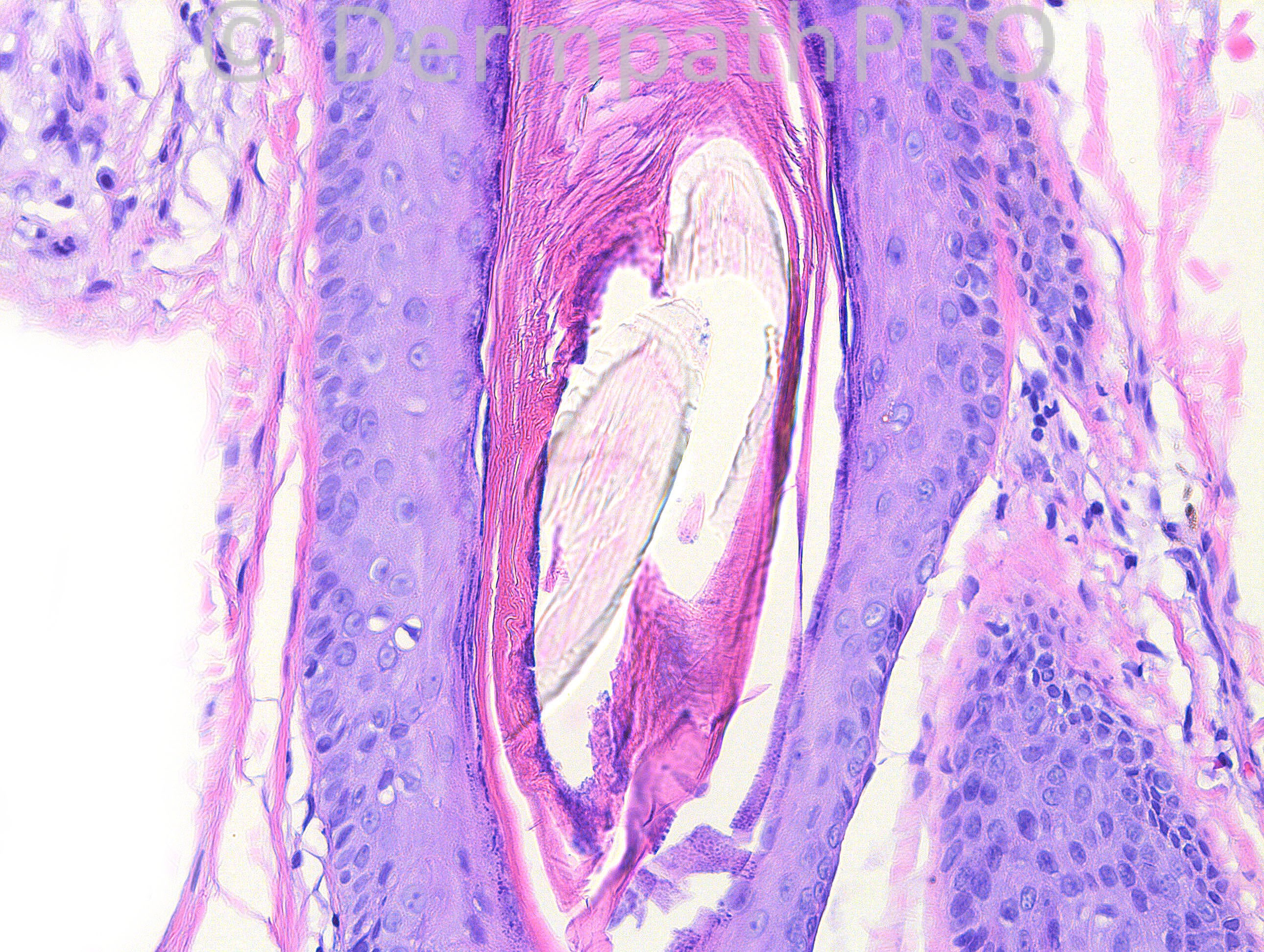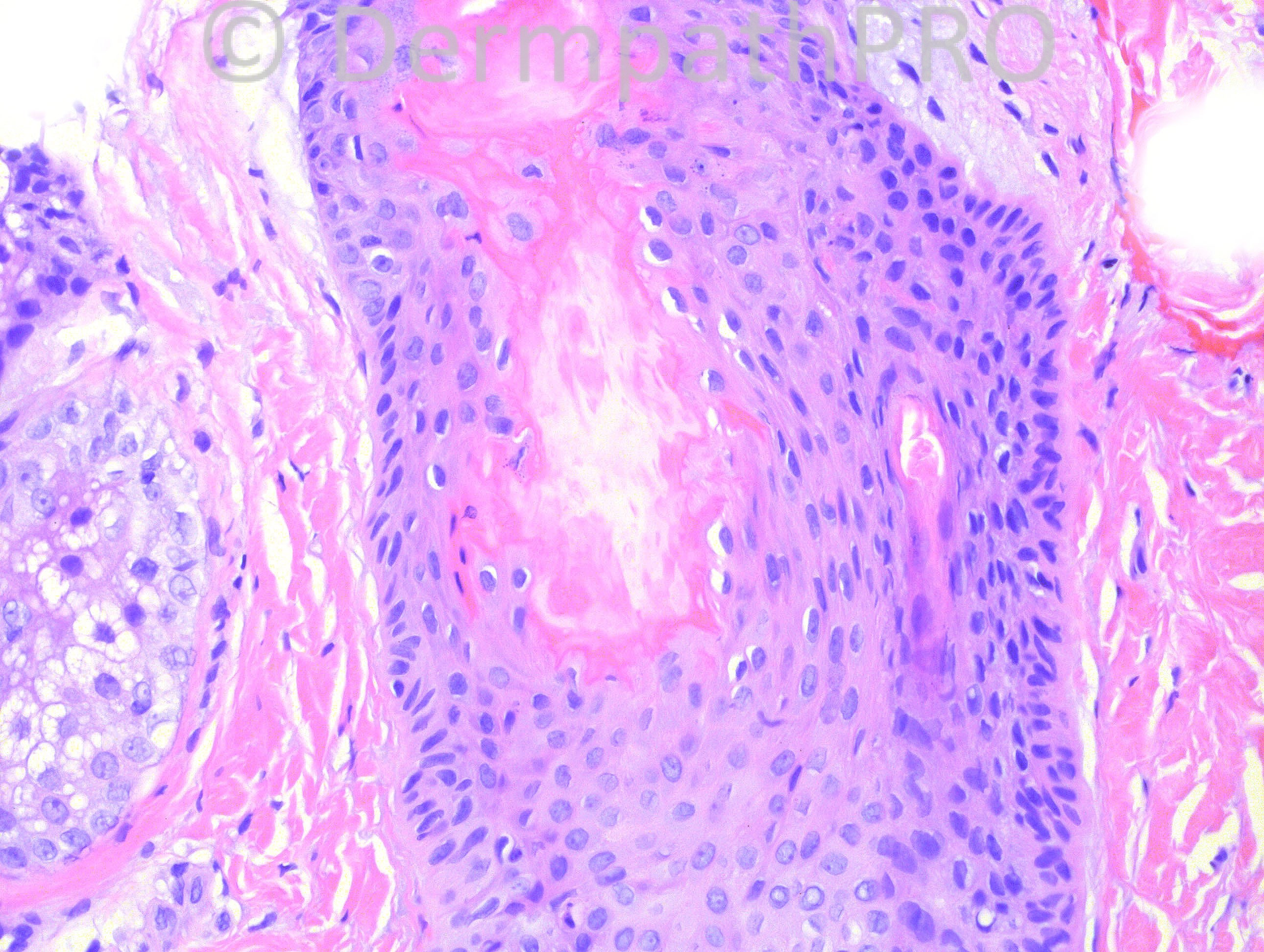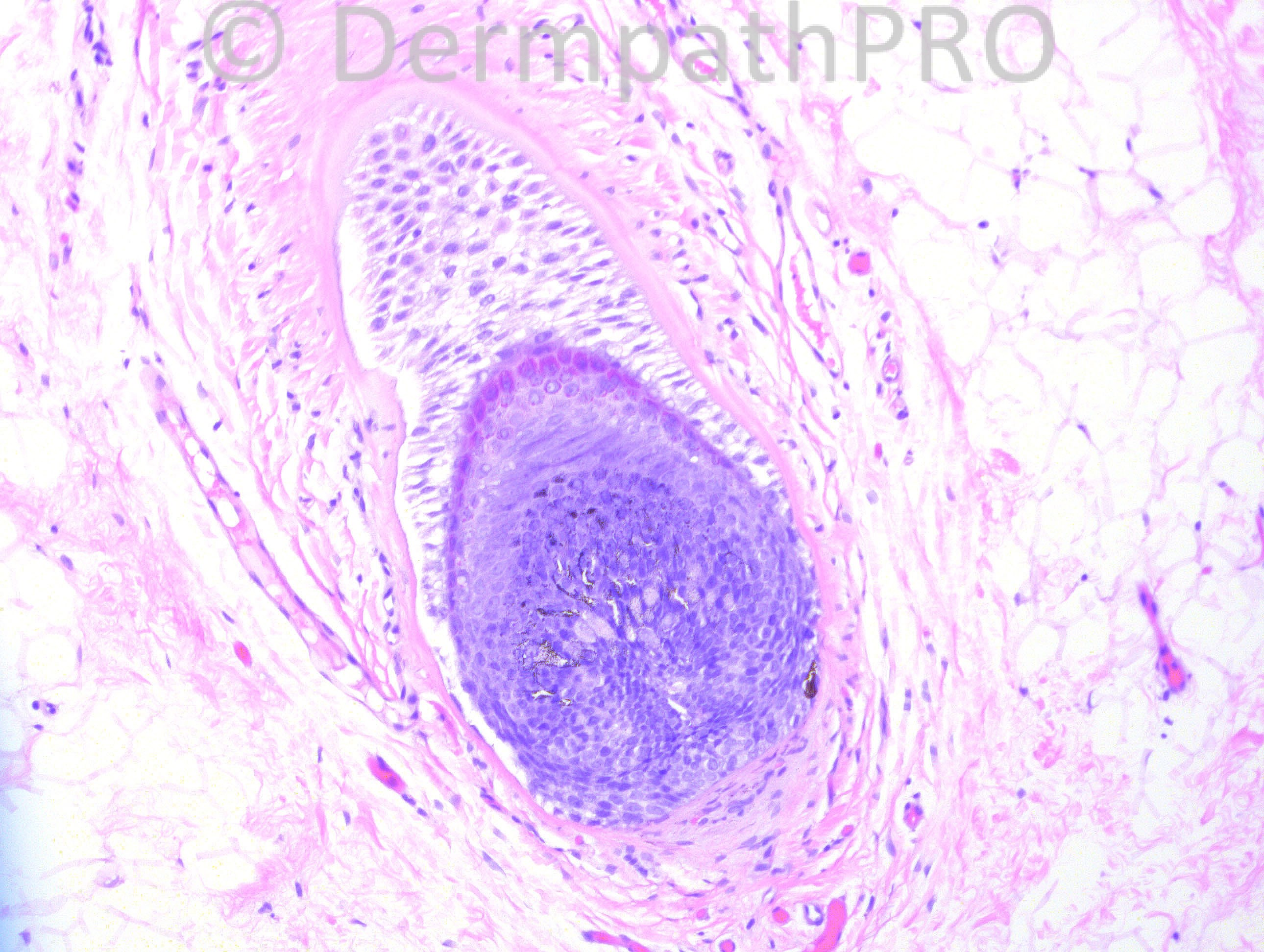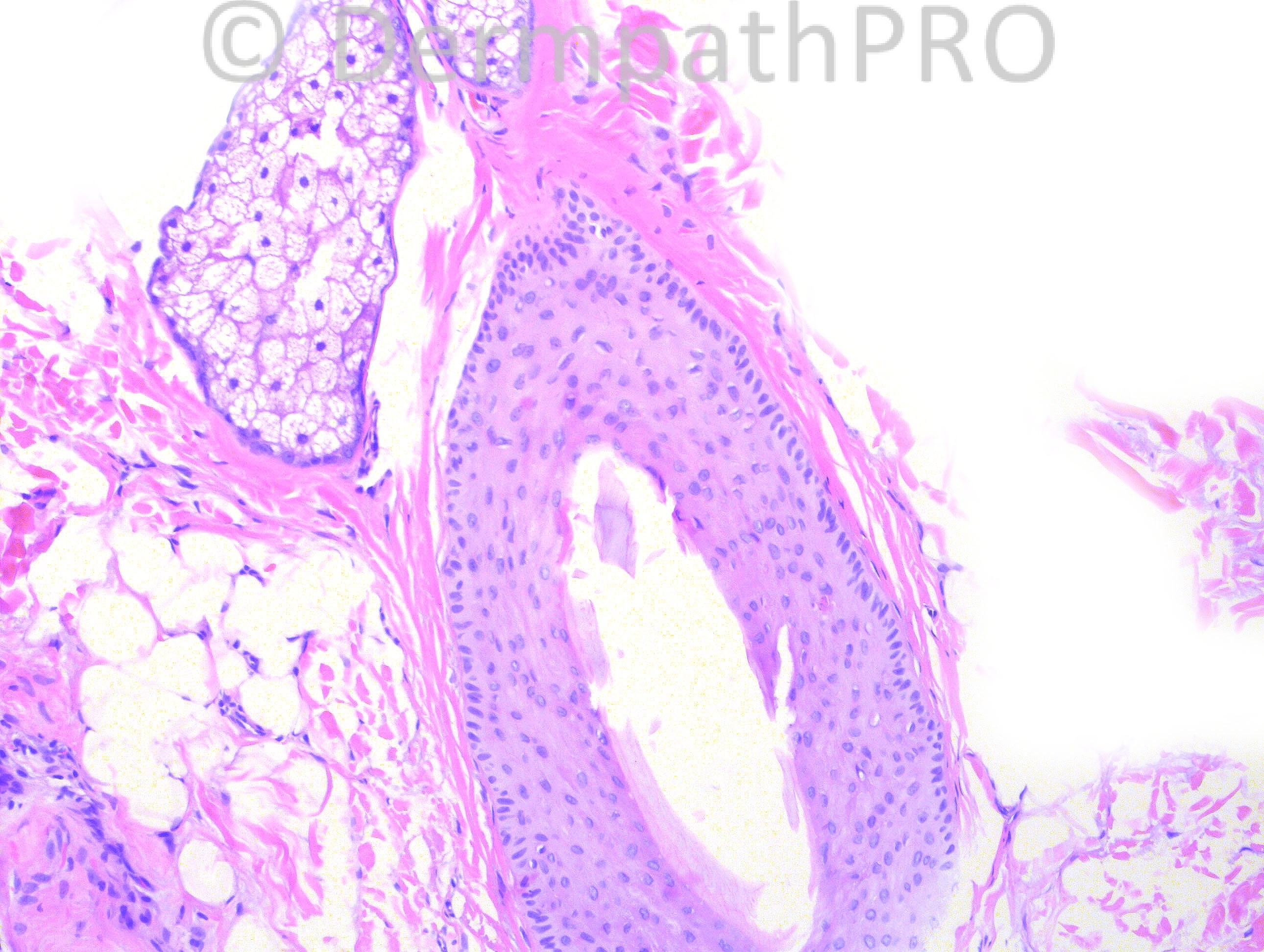Case Number : Case 784 - 19th June Posted By: Guest
Please read the clinical history and view the images by clicking on them before you proffer your diagnosis.
Submitted Date :
64 years-old veteran with hair loss, believed to be pulling out his hair. This is a vertex biopsy.
Case posted by Dr. Hafeez Diwan.
Case posted by Dr. Hafeez Diwan.






User Feedback